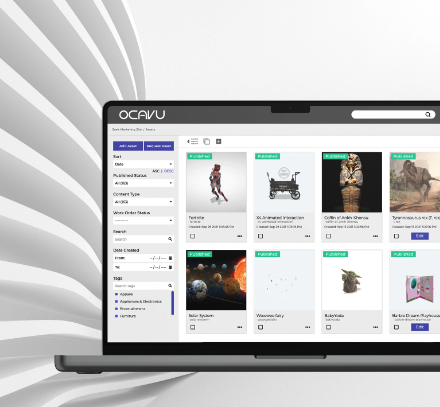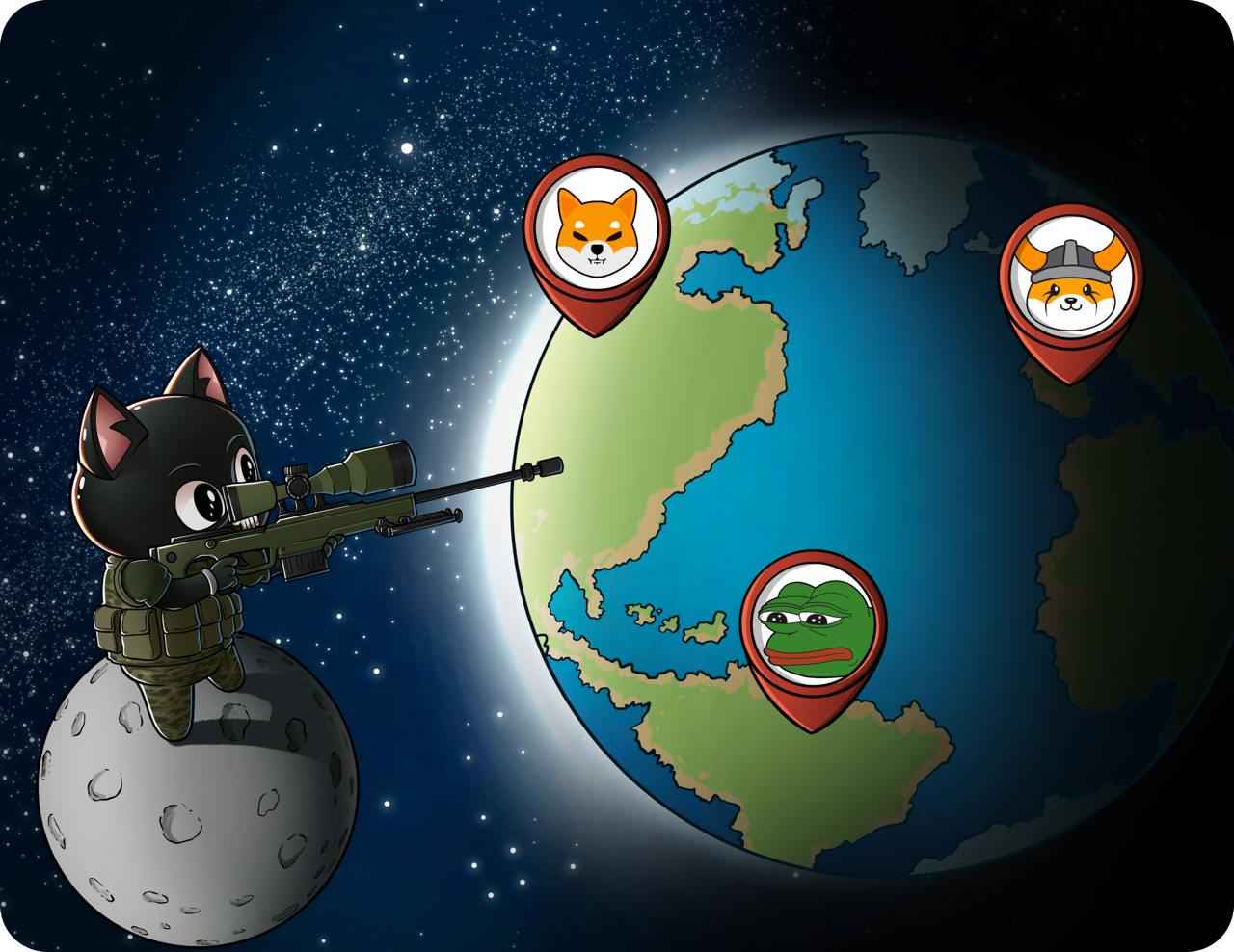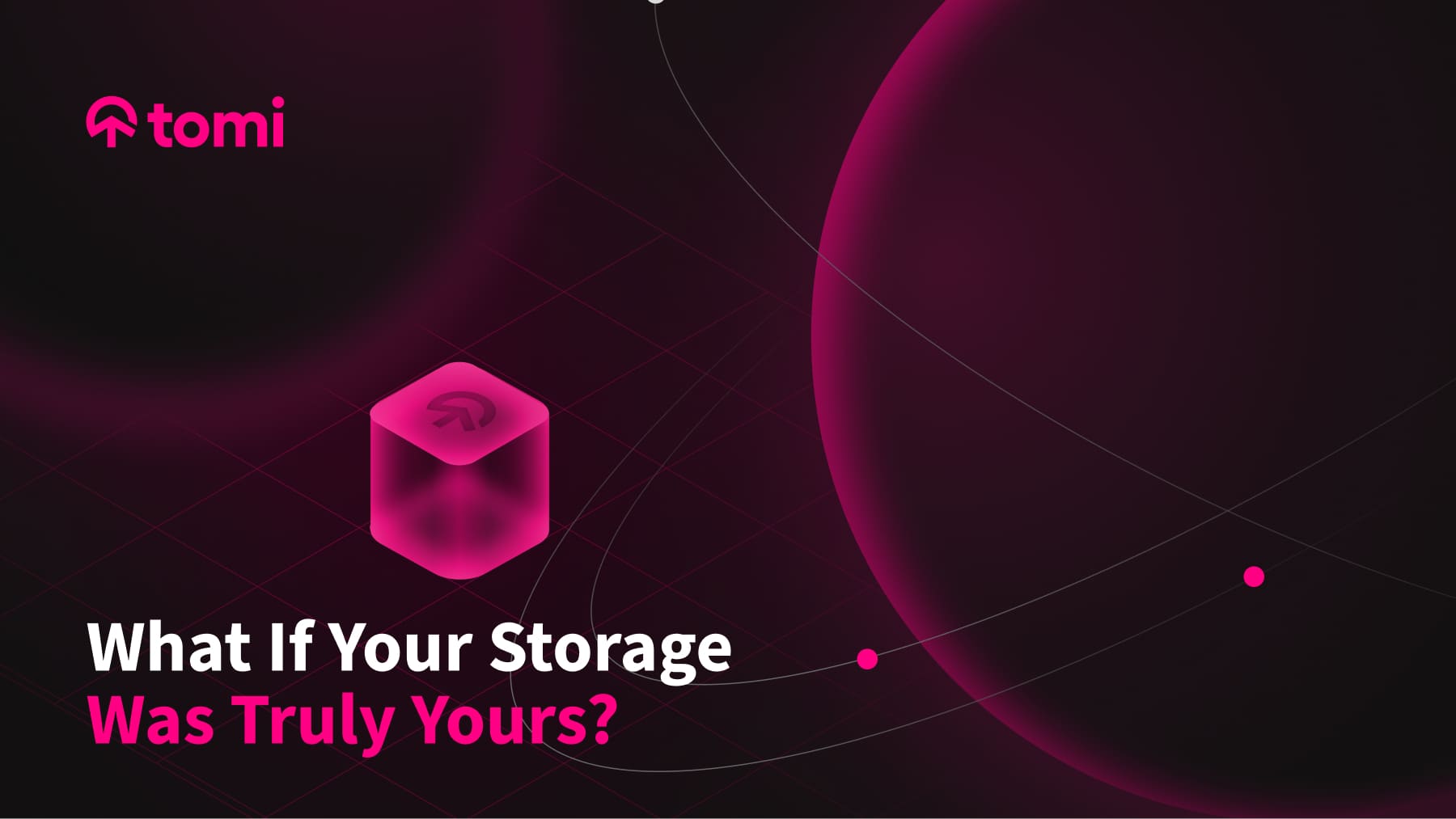
Exclusive Interview: Ocavu’s Jon Cheney Talks NFTs, Sports & Brand Engagement
- Teresa Bach
- September 8, 2022
- Defi
- 0 Comments
We kicked off the week with our usual Sports Slice report, covering off on all of the latest events in sports and crypto. In last weekend’s report, we highlighted Ocavu and their new deal with BYU Athletics. We took a moment to chat even further on BYU Athletics, sports and NFTs, and more with the CEO and founder of the Utah-based firm, Jon Cheney.
Breaking The Big Rocks: Cheney Discusses The Current Landscape
Bitcoinist: Jon, thanks again for the time and opportunity to chat. For readers that are unfamiliar, can you give us a high-level perspective of what Ocavu is and your general perspective on Web3 and NFTs?
JC: With Ocavu, from the very beginning, we’ve taken next-gen technologies and tried to make them easier for brands, influencers, artists – anybody that wants to dive into these technologies – and we started in the XR space: all-immersive technologies, AR/VR, metaverse, all of that fun stuff. About a year, year and a half ago, we started moving towards Web3. I saw a comment on LinkedIn this morning that said, one week in Web3 equals one year in real life. When you’re in Web3, the space is moving so fast, and what we’ve done is created an ecosystem that allows anybody to launch their own community, to bring real-world utility to Web3 – whether that’s your own crypto token or NFTs, to just using general Web3 principles to create a decentralized community.
So that’s a long answer, but the short of it is, if people want to get into NFTs with their community, our team at Ocavu can do it.
Bitcoinist: I love it. Let’s dig in more on NFTs too in particular, if we could. What do you think is the biggest challenge in conversations that you’re having this year around NFTs, or even with influencers; what is a common thread that you’re seeing around challenges with NFTs for folks entering the space?
JC: One thing that I hear a lot from people is, “didn’t NFTs kinda already have their run, didn’t they crash, aren’t they done?” And the reality is, yeah, they’re done, in the way that they were used for the last couple years. A bunch of people trying to do a bunch of get-rich-quick schemes, selling jpegs for a million bucks – I think that’s done. Now it’s time for NFTs to really settle in and say ‘OK, what can this technology be used for, why is it better than Web2 technology, what are other ways to do similar things’. Really it’s just a lot of educating the real purpose of NFTs, which is I believe a more efficient, transparent, decentralized way to represent ownership of anything. What we’re finding people are enjoying at our place, is being able to create experiences, tickets, ownership of different things, and being able to have a nice, transparent, easy and trustless way to trade them between people. When you start to look at it that way, where we say “hey, let’s focus on what Web3 brings to the table here,” it’s a nice way to represent ownership and trustless way to transfer and move those assets between people.
Today if you buy a ticket to a football game, yes you can transfer it to somebody. But typically you have to have a third party involved to hold the ticket, and they charge you 40% of the ticket price with these insane fees; with Web3, I can buy the ticket from you, you can say “hey, here’s my ticket” and I pay you, and it’s on a blockchain. That allows for a trustless relationship – they don’t have to know each other or even trust each other – in order to make that transfer happen, and this opens up all kinds of opportunities for the communities and brands that are trying to dive in.
Ocavu currently is building on Polygon (MATIC) but has their door open to multi-chain support later in the future, as client needs permit. | Source: MATIC-USD on TradingView.com
The Sports Impact: Ocavu, BYU, And Web3 In Sports
Bitcoinist: Tickets are an awesome example. Sports and entertainment is a bread and butter for me, so I’d love to dig into more on your BYU Athletics partnership, obviously that came to life in the past month or so; I’d imagine things are fluid and evolving, but is there details you can share with us about that sports partnership?
JC: The NFT and web3 project with BYU is called Cougs Rise – you can check it out at CougsRise.com. We launched a new feature over the weekend, which is really exciting, called Collections. I got inspired to help BYU go down this pathway by NBA Top Shot. NBA Top Shot was one of the first times I saw something that made sense in the NFT space. It’s digital trading cards, it stays on the blockchain, I totally understand it. There’s scarcity because there’s only a certain number minted of each thing – I get it. So we went out and set out to create something similar for BYU, and the whole time we said that we wanted it to be more than trading cards. We don’t want people just jumping in here for the sake of speculation, and we want people to actually have a better fan experience because of this platform.
In working with BYU and our team internally, there’s a lot of really cool things that we can do – if you go in and buy certain NFTs today, you can complete collections – and as you complete collections, if you’re one of the first people to complete it, you get to redeem that for an experience. You receive an NFT that will be a ticket to some sort of event. For example, this weekend BYU is playing Baylor at home. That will be a big, fun football game with two top 25 teams and that’s really exciting. If you complete that collection, you can earn the experience to be able to go and be in the tunnel where the BYU players are coming out – right there in the action. You can be on the field during warm-up, you can meet players, you can go golfing with the team, there’s all kinds of different things you can do by completing these collections.
We’re really trying to give more real world meaning to these collections, but the cool thing is, once you complete these collections, now you have this ticket that gives you tunnel access. Maybe you don’t want to go there but you were one of the first ones to complete this, you can take that NFT and post it on the marketplace, and sell it to somebody else who wants to come in and buy that. I think a lot of the people that are completing the collections now are the ones that want to use the experience, but the cool thing about NFTs is there is that possibility where you can then trade and let the market do what it does, and have fun and put more value on top of things. If you want to go to the Baylor game, it should be a valuable spot to go down there on the field and hang out with the players.
Bitcoinist: That always helps for sure; I want to dig in more on the broader scope of that, you touched on a lot of it, but there’s big opportunity with live event in sports and at large. Certainly within sports in particular, this is a cool partnership and it’ll be great to see it evolve. Is sports in general something that you see as a lever for Ocavu to tap in with, is this partnership the one that you’re really focused on in sports for the short-term, or do you expect more of these deals in the future? What’s your general perspective on sports with Ocavu?
JC: Sports are going to be big time for us. We have some big deals we’ve signed behind the scenes, and can’t talk about them quite yet. Obviously BYU is not small, it’s very big, daunting even. It’s really exciting. It’s a lot more work than you expect, it’s crazy how much work we put into this; it’s like running a little company inside of our company. It’s hard to run these mini-companies, but we’re excited – what it’s doing is it’s providing a model that can then be pushed out to any team or organization out there.
BYU is unique in that, if we’re doing a college sports deal compared to a professional deal, which we are having many conversations with organizations in the professional space, is the NIL component. I think that’s what makes this BYU platform really cool. Not only can you come in and buy experiences, but every time you buy an NFT or buy a digital collectible on CougsRise.com, a certain percent goes to the player associated with that NFT, ,and that’s really cool. It’s one of the first times fans can actually support their favorite players; if you just really love Jeren Hall as a quarterback, you can go buy one of his NFTs and know that a percentage of that is going to him, and you get a cool collectible and you might be able have a cool experience, maybe you get to go down to the field and meet him and shake his hand, or whatever it is. Being able to bring that NIL aspect into our platform has been really cool.
One thing I do want to say, is yes, sports are important; if you looked at my board right now, you would see that I have this quadrant – or sextant – with sports, university, artists, influencers, brands, and even just tech companies. We have all of those different types of companies working with us to be able to bring an NFT marketplace and all of these things to their fans. I personally see a huge future with all kinds of media – TV shows, for example. If you were to create a Game of Thrones or The Office web3 community, where the TV show says “hey, were gonna launch this thing, and you can buy experiences to hang out with Dwight, or to be able to jump on a Facetime call with the cast, or you’re going be able to get limited edition merch,” or whatever it is.
To be able to do those things, you have superfans out there that will take advantage of that and absolutely want to step up and pay money. It’s an additional way for these organizations to monetize and provide good experiences and opportunities to engage with fans. Today, for fans, what is your alternative? Go to Instagram, go to Twitter, and see what people are posting. That’s it! I love Pysch, the TV show. If I wanted to message James Roday, who plays Shawn Spencer, I can do that. I can go to Twitter, I can go “hey, Shawn, what’s up!” Is he going to respond to me? No way, because there’s a million other people that are trying to do that, and it’s not that he doesn’t care – I’m sure he does – but it’s impossible for him to respond to a million tweets.
I think that these web3 communities can provide a mechanism where you can say “hey you know what, I do have the time to pay attention if someone’s paying me five thousand dollars.” We’ve created a platform that will allow any community, really, to dive in, but I definitely believe and know – because of the interest we’re receiving and things we’re moving forward with – that sports is going to be a big, big piece of it.
Ocavu’s Nuts And Bolts & The Strength Of ‘Superfans’ In Sports
Bitcoinist: I appreciate the answer and your perspective on your verticals is insightful, thanks for sharing. There’s really this general incentive alignment between fans and IP or whatever it may be, that gives a new level of connection. In sport, or across talent, there’s a lot of ways that are clear cut, but one that seems more challenging or more of a difficult nut to crack is brands. You work with a ton of different brands, from verticals at least, between tech, social media, apparel, so I’m curious if there’s consistent threads that you’re seeing across those different verticals that you mentioned, or are those challenges that you’re seeing with tech brands versus apparel brands, for example, very different?
JC: I think the one thread that still is across everybody is “wait, this is an NFT, but it doesn’t feel like an NFT, this actually feels cool!” People are afraid of that word, or acronym, because a lot of people got burned, and a lot of news headlines said “NFTs are a joke, and they’re a scam” but then a legitimate brand or a legitimate team or community comes out and says “hey, I’m doing NFTs,” and people go ‘wait what?’ So, I think that thread is across everything, but there’s no question that when you’re a tech company versus a clothing company versus a TV show or piece of IP, you’re going to have to take different approaches. There’s different things that you’re going to do.
For example, if you’re an apparel company and you just said “hey, I want to do NFTs.” One of my first ideas would be, let’s create an exclusive club inside of your company where you have maybe 1,000 memberships and there’s never going to be more than 1,000 – or maybe it’s 100 – it’s something small, but you then do limited drops of your clothing so that ‘superfans’ of your clothing are going to buy those and have the ability to go into a ‘members only’ merch shop where you can buy that limited edition whatever – create exclusivity. With tech, you can do the same type of thing, but you can do it even broader. You could do something like user groups that are more exclusive, of people that want to talk to each other and learn more. You have to create content that people are going to want to see, but it doesn’t have to appeal to everybody, it’s going to appeal to your top 1%.
One of the things we’ve built with the Ocavu network, which I don’t think we’re the only people that do this, but one of our features built-in is that we can gate access to anything based on the contents of what is in your Ocavu wallet. If you have one of these 100 NFTs then you can get to new content, or even just a website that could look different to you because you own that NFT. Here’s a crazy idea I just thought of: maybe, let’s take Facebook for example, maybe they come out with a million NFTs and if you own one of those – maybe they sell them for 10 bucks – you have a custom skin to Facebook, and so your Facebook experience is a little different, it looks cool, it has cool buttons and animations. But you can’t get to that by just going to your settings and changing it, you have to buy an NFT in order to do that. So, a tech company can offer as something as simple as that, where it just makes something look cool – it’s unique.
How much money today is spent on skins in video games? In just changing the background on your xbox or changing your character or avatar? The emotes you can do in Fortnite, there’s so many examples of exclusive content, ways for you to express yourself that can be unlocked and locked via web3 technology like we have.
Bitcoinist: I love that example, we’ll be lucky if they don’t steal that. You took me right where I was going to go next, which is the Ocavu network, you have a utility token as well. Can you talk through a bit more about what that is, what it looks like, and is there a blockchain of choice that you’ve partnered with, are you using your own, and how these things fit in the broader picture?
JC: Great question. I’ll define a few things really quickly for those reading at home; the Ocavu network, I would call, the ‘utility layer.’ It can sit on top of any blockchain. It’s built to be able to give utility and reference an NFT, or recording on the blockchain, and say ‘hey whoever owns this NFT can unlock this utility,’ and our engine can sit on top of whatever we want. We started with Polygon, and Polygon is the only network we’re relying on right now, just because it was really stable, it’s built – I know there’s debates on whether it’s a true layer 2 – on top of a very stable ground, has great backing, it’s environmentally friendly, gas fees are incredibly cheap. So, it just had everything we needed for something to build at scale. We’re thinking, what if there is 60 thousand transactions a day, how’s this going to handle at 500,000 transactions, 1M transactions a day – and felt it could scale pretty well. We do plan on building a future in other chains like Immutable X, Solana, Avalanche, there’s other ones that are out there that are cool, for different reasons. We’ll prioritize based on what our clients need. Up to now, I haven’t had a client been able to tell me a reason why Polygon wouldn’t work perfectly.
So the Ocavu network basically sits as this layer on top, it is it’s own wallet, if you log in to a site that has the Ocavu network on it, you put in your phone number and put in an auth code and log in. It’s super easy, there’s no password, no seed phrase, it is a custodial wallet so that you don’t have to worry about that. In the near future, we will allow people that want to take custody of their wallet from us. It’ll be a dual system. The system that we’ve built is built for everybody. Not just for web3 enthusiasts, like you and me. We can jump on Metamask, transfer stuff, do all these things, and we’re okay. We’ve figured out how to do private keys and we’re not worried about it. But most people aren’t. They’re going to be terrified of that, it’s difficult experience. We did this with BYU in mind. If there’s 65,000 fans sitting in this BYU stadium, and you do an overview cross-section, what percentage, what slice of that stadium is comfortable handling their own private key and dealing with the word ‘NFT’? The answer is, it’s really really small. So, we said we want to create a digital collectibles thing.
Some of the things the Ocavu network does, and the Ocavu network token helps with, is providing an on-ramp and off-ramp for fiat; if you go to CougsRise.com and you buy something, you put in your credit card or your debit card and you’re done. We don’t even accept crypto yet, but we will. For now, we initially wanted to make it very, very easy. So, the Ocavu network provides that on-ramp and off-ramp, it provides a place for you to store your digital assets, it provides ways to gate content for brands. The Ocavu network token also acts as a liquidity pair for any communities that want to launch their own token. So we have some companies, one of them we’ve already announced is Mixtape token, and we’ve announced that BYU actually does want to launch their own utility token as well, eventually. We just didn’t do that at the same time as the launch of their platform because it was too much all at once. So we pushed it back a little bit.
Ultimately, in order to make, for those that are reading and don’t know, a new token tradable, you need to pair it with something of value to create a liquidity pool. That allows it to be traded on the open market. You have to take something of real value and pair it with that, so we said “ok, we can just show up and provide USDC as a pairing for all of these community tokens,” but that can get very expensive at scale. What if we used our own token that acts as that liquidity pair, so we’ll take a million of our tokens and pair them with whatever number of millions of tokens of this new token. We’ll pair them up and put them out on the market, and now that new token can be traded immediately – and that’s really cool. We don’t have unlimited Ocavu tokens, so we don’t want to keep emptying more, as that will just devalue it. So we built in about a 2% buyback of every single transaction inside the Ocavu network. So every time someone buys something on CougsRise.com for example, 2% of that will be used to buy Ocavu network tokens, and it will go back into our treasury, which will replenish our treasury and allow us to continue pairing the new tokens in new communities like that. So it creates a cycle that allows us to continue to grow the entire network.
Bitcoinist: That sounds like it’s keeping you busy, I’m sure. Jon, as we wrap up here, I’ll throw one more your way – this year’s been a challenging year. The old adage is that the folks that can build and sustain challenging years like this can come out ahead when things are back on the upswing and be an absolute tank. I’m curious some of the challenges that are top of mind for you approaching the final quarter of the year, and despite this broader headwinds throughout the year, maybe some things you’re really proud of from your team this year – what’s your overall status on how you’re feeling to close out this year?
JC: My broad market view: there’s plenty of uncertainty in crypto. There’s a lot of headwinds, lots of things happening, obviously interest rates, the FED, all that. The problem is that crypto is still, I think, a little too coupled, tied to the broader market. I do think that at some point, I think it’ll happen in the next 12 months, what people are calling the ‘decoupling,’ where the crypto market takes on more of a life of it’s own. There’s one big reason for that. There are some large groups, large hedge funds, that are starting to open up mechanisms whereby they’ll be able to invest their money. When crypto individually is large enough, it can pull away, and it’s at the size right now – it’s a trillion dollars – but it’s not that much in the grand scheme of things. Once it becomes ten, twenty, thirty trillion dollars on it’s own… that’s when it can really start to have a life of it’s own. I think we’ll start to see some huge growth in the next twelve months. I’m personally bullish on the broader market as a whole.
To your point about how do you work through the hard times… I love the hard times. Not because I love the hard things about the hard times, but because it forces us as builders to create real value. All of these ponzi schemes and ponzinomics and scams and get-rich-quick schemes, you can see right through them now. A year ago, people were like, “this is crazy, this is awesome, everyone’s making money.” People couldn’t really figure out why, and I’m saying “guys, there’s no value here, it’s not going to happen.” I was almost mad, a little bit. As a lot of people were about some of the NFT projects coming out, thinking “why on earth are you buying that?”
It really is the downtimes when the good companies come out. Because you’re right, if they can make it through this time that means they’re providing something valuable that will only be that much bigger as the market comes back. Overall, very excited, my team [at Ocavu] has been unbelievable – we’re pulling off things with some of the timelines that we’ve done, are just absolutely crazy. I’ll share this, I dont think I’ve shared this before with anybody: from the time we decided to create the Ocavu network token, to the time it went live, was just 28 days. That was crazy, we had to create Ocavu.live, a staking site for rewards for early folks providing liquidity. We had to create the token itself, we had to create litepapers, all kinds of writing, discord creation, there’s so many things that have to happen. Our team at Ocavu is able to pull together an incredible effort and launched that; we have a good team here at Ocavu, I’m very very proud of them and excited to see what they;’ll be able to do over the next few years.
Bitcoinist: I know there wasn’t too much sleep in those 28 days. Appreciate you sharing that with us, and sharing some of your insights today. Thanks so much for your time Jon, much appreciated.
Featured image from Ocavu.com, Charts from TradingView.com
The writer of this content is not associated or affiliated with any of the parties mentioned in this article. This is not financial advice.








